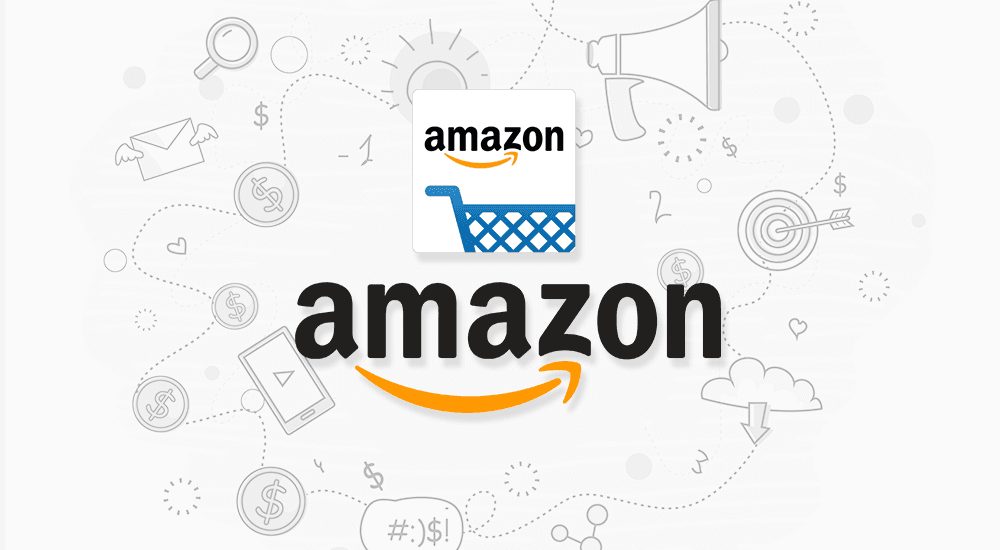Marketing doesn’t have to be expensive.
There are endless opportunities to advertise your business for free or for a really small price. They’re opportunities worth making the most of – even for the most successful companies.
Ready to find out? Let’s start with free.
Free options
1. Create a Facebook business page
With over 2.6 million monthly active users, having a presence on Facebook is non-negotiable. Luckily for you, making your own business page has never been easier.
Fill out some basic information, add a profile and cover photo, and you’re ready to go. If you’re part of a wider team, you can add collaborators so you have shared access. It’s a great platform for sharing content and communicating with customers, regardless if that is all you use it for.
2. Encourage UGC
85% of website visitors find visual user-generated content more influential than brand photos or videos, and 53% of millennials say that it has influenced their purchasing decisions. Let that sink in for a second.
All of the hard work you’re putting into your marketing strategy could be amplified by your audience. By getting them to share your new product, campaign, or their experience, other users will trust their opinions and jump on the same bandwagon. It has the same positive impact as reviews and testimonials.
3. Create a landing page
Landing pages are designed to get more eyes on a specific product or service. They send users directly to a specific page, saving them time searching your website and making them more likely to convert.
They’re focused on making users complete a desired goal, which could be anything from giving you a call, buying your product, or downloading your brochure. This makes them an excellent way of capturing information about potential customers – as you can use details like their email later down the line for retargeting.
Here are some tools that you can use to build landing pages that convert:
4. Build an email list
There are various ways of building an email list. One of the most common is to create personalised call-to-actions for each blog or landing page, driving users to give their email address in exchange for a PDF or something else of value. Something like ‘Grow your business’ will convert 202% better than something default such as ‘Read more’.
However, although creating an email list is free, it will take time to build a responsive audience if you aren’t spending money or pushing through other channels.
5. Guest post on niche sites
Getting your work published on someone else’s site will help you boost brand awareness and increase trust. After all, your work must be good if other businesses are publishing it.
Before you start, figure out the type of sites you want your work to be showcased on and make a note of their guest post guidelines. Tailoring your content will increase your chances of getting published and show that you’re a market leader in your industry.

6. Use local business listings
If you own a physical store, this is definitely one to take advantage of.
Search engine listings, like Google My Business, allow you to easily connect with customers across Google Search and Maps, giving them the option to call, message, or visit your site with a single click. It cuts out all the extra time researching your business, assuring them you are legitimate and based only so many miles away from their home.
Moreover, you can use this space to highlight your opening hours, special offers, and your fantastic customer reviews.
7. Get involved in Twitter chats
The fast-paced nature of Twitter makes it the perfect platform for commenting on real-time updates or stories and jumping into relevant conversations that are happening right now. You can show your expertise by giving an opinion and talking directly to influencers or other people in your industry.
In addition, use hashtags to find certain topics and take part in weekly events such as #ContentClubUK to make your mark. The more consistent you are, the more recognisable you’ll become.
8. Appear on a podcast or create your own
Being a part of someone else’s podcast requires establishing a relationship, but following the step above will help you do that. Be consistent on other social media too, as platforms like LinkedIn will put you in front of a more professional audience and present diverse opportunities.
In terms of creating your own, platforms like Skype and Audible offer free recording, and uploading to YouTube is also completely free. Be as original as you can and try to offer something you can’t find anywhere else.
9. Host or join webinars
Like podcasts, webinars are a great way of making your mark and telling people all about your brand. You can deliver high-quality content to an extremely targeted audience, take note of their reactions, and run Q+A sessions.
Featuring another expert on the webinar will give it even more authority, showcasing you as a leading expert who people can trust.
10. Optimise for Google News
Ranking on Google News increases your brand awareness and shows that your site has been approved and promoted via Google itself. It relies on diverse and unique content, but you can use Google Trends to identify current keyword terms and trends.
Sites such as Search Engine Journal, Search Engine Land, and Search Engine Roundtable also regularly cover current events and news which you can use to pull information and inspiration from. If you use Twitter, digital marketers such as @rustybrick and @JohnMu often provide more insight.
11. Run competitions and prize giveaways
Social media competitions and giveaways are perfect for growing your followers, building brand awareness, and creating excitement around your platforms. The right incentives could spread the word further than any paid ad could.
If it’s part of a hashtag campaign, even better. This will allow you to amplify your online presence and make your brand more recognisable, at the same time as strengthening relationships with your audience. See clothing brand Pretty Little Thing’s #prettylittlewishes campaign for inspiration.

12. Repurpose old content
Some advertising can be so easy it feels like cheating. Repurposing old content is a smart way to keep your channels booming with articles without having to think of brand new ideas every time.
Turn long pieces of writing into exciting and shareable infographics, turn generic blog posts into engaging How-To guides, and turn memorable snippets of data into individual tweets recognisable with your company logo.
13. Invest in SEO
SEO, otherwise known as search engine optimization, is the practice of improving online content for the benefit of users and search engines. It helps you figure out what your customers are searching for so that you can optimize your web pages for your target keywords – and make sure your site is accessible to both search engines and potential customers.
It’s a fundamental way of improving your website’s overall searchability and visibility, and with tools like Google’s Keyword Planner, doesn’t cost at all to get right.
Need help with your SEO? Here are some tools that will drive your content into the SERPs:
14. Spread the word with PR
If a story about your company appears in a credible publication, customers will instantly have more trust in your brand. It’s what makes PR such a great tool for building your brand profile, putting your business at the forefront of the industry, and cutting through the noise of other online ads.
Gaining links to articles on reputable outlets will also help to drive more traffic back to your own site, increasing brand awareness and generating more leads. Once you’ve built relationships with journalists, PR can work like a dream.
Cost-effective options
15. Google Ads
Google Ads isn’t free to use, but you only pay when someone clicks your ad. If you don’t know how to use it, Adzooma can optimise all of your campaigns so that you don’t have to learn. Apply improvements in a single click, create custom reports for clients and stakeholders, and set up smart automation to save even more time.
However, the position of your advert all depends on the auction. If an advertiser has a higher bid and better Quality Score than you, their advert might rank higher even if you have the same keywords. Certain industries also have a higher CPC (cost-per-click), such as insurance, mortgages, claims, and loans.
16. Facebook Ads

You can run Facebook Ads on any budget, though some advanced adverts require a minimum spend. Luckily, Adzooma’s free reporting suite always keeps up to date with which campaigns are bringing in the best return. You can even compare campaigns across Google and Facebook ads to cut your wasted spend.
Facebook also offers features such as Campaign Budget Optimisation (CBO) which automatically distributes budgets to best-performing ad sets and ads – helping you achieve a better ROI.
17. Twitter
Twitter connects you to the most valuable and influential people in your industry, making it ideal for businesses who are just starting out online. Plus, when you use their ads, you only pay when someone achieves your objective, i.e. if you run a followers campaign, you only pay for the number of people who start following your account.
You can target people who have used a specific word or hashtag, put money behind an organic post to boost its reach, and use Twitter engager targeting to remarket to people who recently saw or engaged with your tweet.
18. LinkedIn
LinkedIn has over 675 million users worldwide, making it one of the best places to find and connect to other professionals. You can advertise via 9 different ad formats, send personalised messages with a single CTA, and track conversions from people who viewed and clicked on your ad through LinkedIn Conversion Tracking.
However, it does have a minimum spend cap of $10 per day per campaign, which is something you wouldn’t typically find on other ad platforms. It’s worth it though if LinkedIn offers your ideal audience.
19. Reddit
You only need $5 minimum to launch a campaign on Reddit. Posts that are most popular will reach its front page, while ‘subreddits’ form online communities that share similar interests. Since anyone can create a subreddit, there’s an opportunity to share diverse content with audiences from across the globe.
Your campaign objective can also be as simple as starting a discussion, making it a good starting point for new businesses.
20. Capterra
If you specialise in business software, Capterra is for you. It’s a software review site people use to find products, meaning the audience is much more likely to convert than those on other platforms. They come with the intention of researching software – different from those browsing on the likes of Facebook.
Capterra’s bids begin at $2 and increase in $0.25 increments, and the highest bids typically show at the top of the listings. But since there’s so much room to boast about your business, you could sway customers through benefit-driven content instead.
21. Quora
Based on questions and answers, Quora allows you to sandwich your business between useful information and convert users who are looking for a fast solution. You can find and filter conversations relevant to your industry, showcase yourself as an expert, and build awareness around your brand.
You can also add to, and comment on, other users’ submissions, enabling you to promote your business without shoehorning it in.
22. Amazon

If you don’t know by now, Amazon is an excellent advertising platform. A huge 197 million people visit the site every month – more than the entire population of Russia.
Amazon allows you to optimise your performance by adjusting your keywords and budget at any given time, and winning a relevant keyword will result in many more views than a non-sponsored listing. However, Sponsored Product listings must be eligible for Amazon’s ‘Buy Box’, which you have to compete to earn depending on the competition.
Push your business without breaking the bank
Done right, these tips and tricks will help you build brand awareness, drive more traffic to your website, increase sales, and form loyal relationships with customers.
However, the options you choose will depend on your business.
Do a bit of research to find out which will work best for you, and remember that you aren’t limited to just using one. Use as many as you want to reach different audiences and get people talking about your brand or service – without having to worry about the cost.
Happy advertising!




